Postal History of Guam
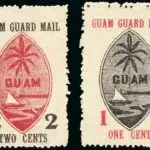
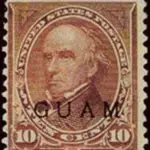
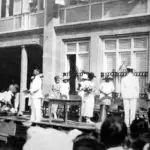
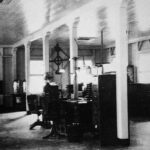
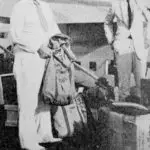
Table of Contents
Share This
Spotty beginnings
When the Americans arrived in Guam in 1899 they brought a supply of United States stamps overprinted “GUAM.” These stamps were used for about one year after which regular US postage stamps were used.
Postal services were initially provided aboard the USS Yosemite, which was probably the first American floating post office. When Naval postal operations ceased, a room in the governor’s house in the capital of Hagåtña was converted into a post office in 1901. Appointed US Navy Governor of Guam Seaton Shroeder appointed A.T. Perez as postmaster, who was succeeded by Charles Stimson in 1902, Pedro Duarte in 1904, and James Underwood in 1915.
There were no branch offices in the other villages of the island nor was there any delivery service to outlying areas. Beginning in 1906 US Marines carrying official messages between the various military installations on the island also carried private correspondence, but eventually the volume of private mail increased to such an extent that it interfered with official duties and the courtesy service was discontinued. People then had to depend on the cooperation of a neighbor traveling in the right direction to have messages delivered or to receive incoming correspondence.
Another difficulty during the early years of postal service was that many people in the US mainland did not know Guam was a United States territory, and many letters and other correspondence were posted with several stamps, enough to send the letters to foreign countries. To some extent, this remains true today.
The movement of mail was only as fast as the available transportation of the day. Before the advent of air transportation, it took months to communicate with those in the United States and foreign countries.
Guam Guard Mail
There the matter rested until 11 June 1929, when Commander Willis W. Bradley, Jr. took office as the 29 American governor of Guam. Bradley instituted a number of reforms in the island government including authorizing a general election, the first ever held in Guam under American rule to select members of the advisory 2nd Guam Congress, defining Guam citizenship (as the entire island was considered a US military base, only US military personnel and citizens of Guam could leave and enter freely), proclamation of a “Bill of Rights” for Guamanians and support of the local economy by contracting with local businessmen to provide some public services such as the maintenance of roads and telephone lines.
Bradley also devised a system whereby a local bus company would pick up and deliver mail from the offices of village mayors. This service was initially provided for free, but later, when it was clear that the operation could be self-supporting, a contract for $5 per month was negotiated. Funds for the local mail service were derived by requiring that all correspondence carried be franked with postage stamps issued for local use only.
When US postal authorities refused to authorize Bradley to overprint US stamps for this purpose, he obtained an initial supply from Philippine postal authorities (who, in turn, had received their stamps from Washington). The first mail franked with these stamps was delivered on 8 April 1930. This service was the Guam Guard Mail started by Bradley in the 1930s to provide a method of home delivery to the civilian population which was served by only one post office. It was funded through the local stamps and served the villages of Hagåtña, Piti, Sumai, Asan, Malesso’, and Inalåhan.
Originally called the Guam Postal Service, the name was changed to Guam Guard Mail when the US Post Office objected to use of the term “postal.” The project proved so successful that the initial supply of overprinted Philippine stamps was exhausted before it could be replenished. This situation was remedied by printing an issue locally (released on 9 July 1930) using the design the recently adopted official seal of Guam. A third and then fourth and final issue of stamps were issued later in 1930 when additional supplies of Philippine stamps arrived.
Spurred into action by the success of their upstart stepchild, the US Post Office announced its intention to provide mail delivery to all major villages by 8 April 1931 and on that date the Guam Guard Mail went into retirement.
Forty-five years later Ricardo J. Bordallo, second elected governor of Guam and son of the Guamanian businessman whose bus service carried the first Guam Guard Mail letters in 1930, reactivated this unique institution of US postal history as a bicentennial project to commemorate Guam’s historic past.
Early post masters
Among the early post masters were:
- James Underwood
- Tommy Santos
- Aleandro Cruz
For further reading
Clark, Lawrence S. “The Guam Guard Mail of 1930.” In 1970 Congress Book, #36. Chicago: American Philatelic Congress, 1970.
Murphy, Robert T. A Postal History/Cancellation Study of the U.S. Pacific Islands (including the Trust Territories). State College: American Philatelic Society, 1983.
